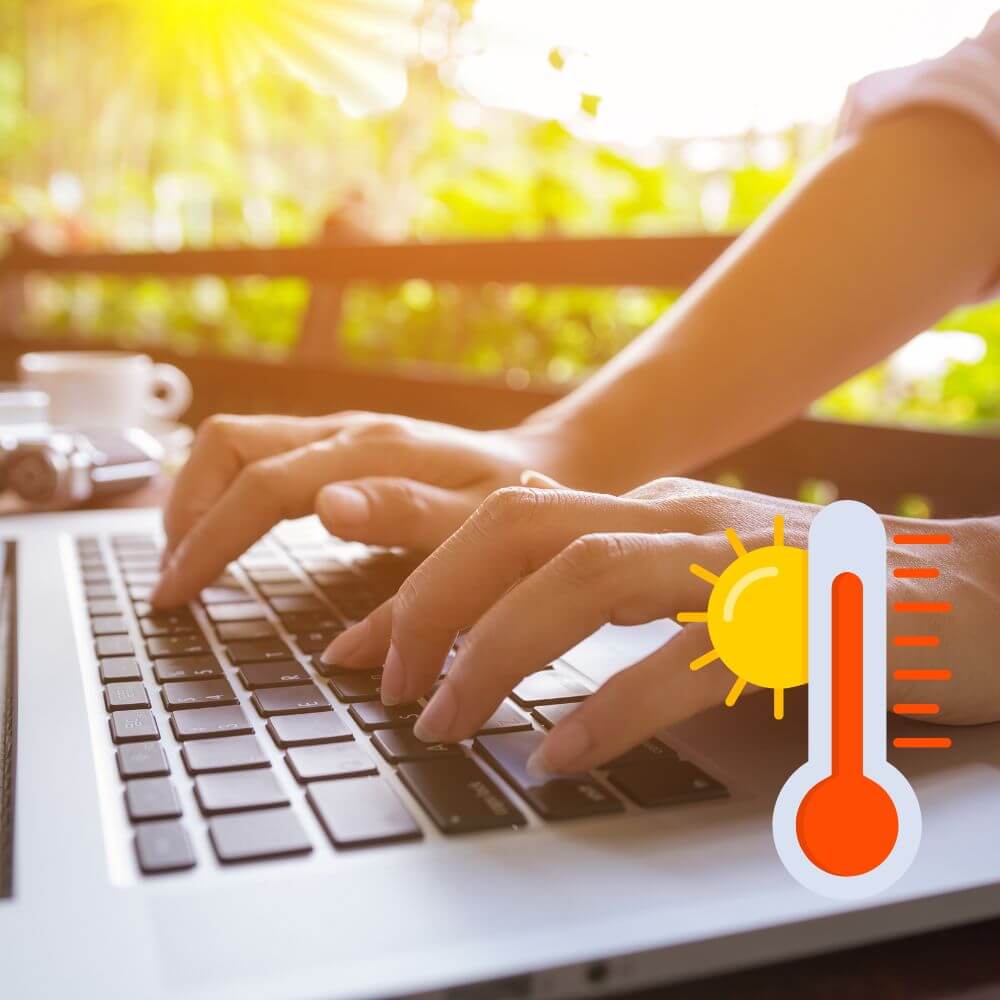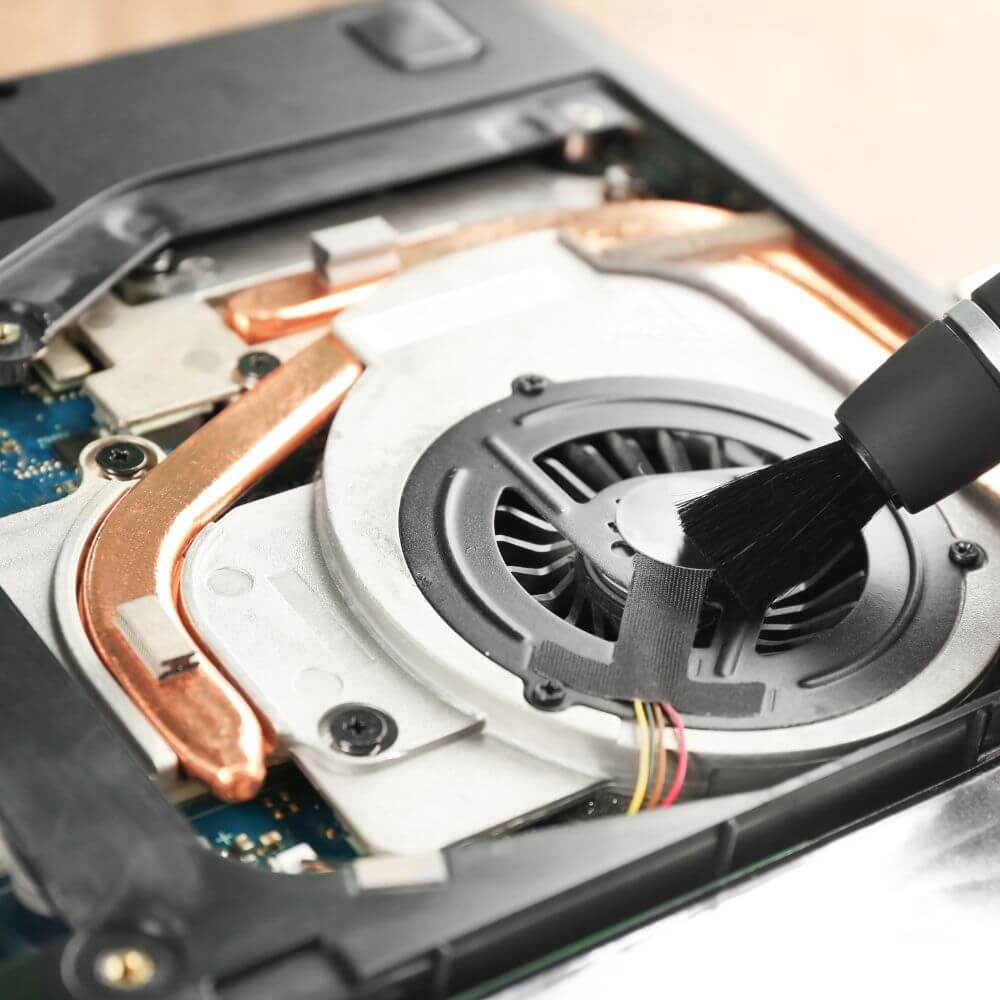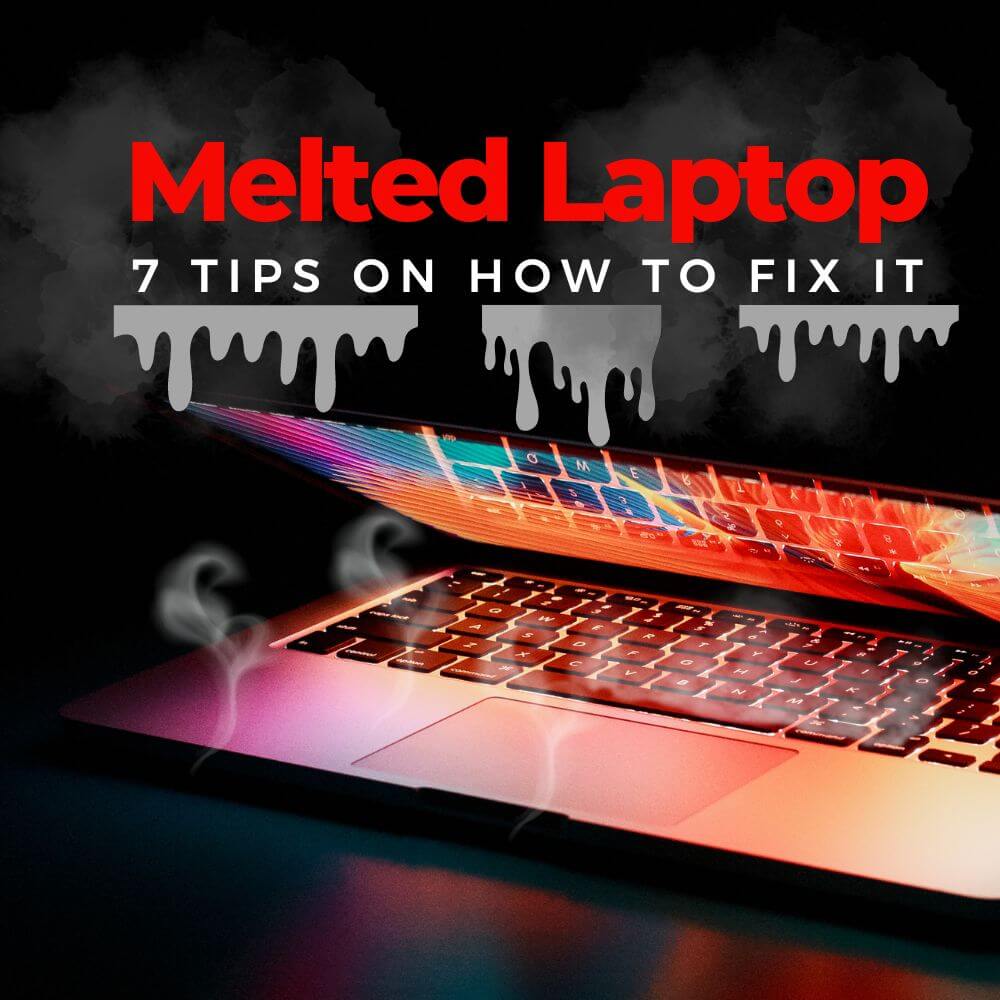Your laptop heating up is one thing, and more dread comes up when you are faced with the case of overheating. But you knew you’d reached the limit when your laptop turned up melted. A melted laptop rooted in an internal issue only means things have gone haywire with your laptop. Hence, why the first preventive measure should come up the minute you notice unusual heating up in your laptop.
A laptop hardware melting is not something so common. Because a laptop is built in such a way to shut itself down once faced with the extremity of overheating, it’s almost impossible to see a laptop catch fire or melt. But of course, the keyword is almost. There indeed have been cases of laptop external components melting out either because of an uneven airflow circulation or badly placed thermal paste.
Usually, if you can still salvage your laptop, it will be advised to either add a new thermal paste or manage the airflow mechanism into and out of the laptop’s port, to pull out some of the heat. This guide will take you through all the other tips you can try if the traditional ones fail to help. And further, give insight on other things that can also give rise to a melted laptop. Let’s get started.
Why Is My Laptop Melting?
The most common reason for a melting laptop can be that laptop is suffering from severe overheating. Normally, your laptop should try to save its internal components and shut itself off. However, when it doesn’t do this but dissolves in melting, you either take it to a professional to get a fix on it or try your best to get rid of the heat.
Some basic signs of your laptop overheating are your processor acting less efficient than before, your fan running for a long time, or not running at all. Your battery also starts acting up by getting a reduced life value or even becomes unstable. The cause of these instances may be that you habitually place your laptop in direct sunlight or in-between sheets on your bed. Just conditions that make it hard for easy airflow out and into your laptop’s vents.
It can be that your laptop’s fans are due for a good ol’ cleaning. If it’s not because of some internal connection gone wrong (which you should check out to be sure), then overheating can be an issue, as discussed earlier.
What Is The Melting Point Of A Laptop Plastic?

The extremity of the heat most laptops can take on stops around 95°F, i.e., 35°C. So basically, the safe zone is around 50 to a bit above 70°F. At a temperature lower than 35°F, a laptop is likely to frost, followed by the laptop shutting itself down. And at a temperature higher than 80°F, it either tries to down clock/down-volt or, in some rare cases, the plastic starts melting.
Frankly, no heat produced by your laptop should be strong enough to make your processor or any part of your laptop melt, for that matter. The melting point of laptops’ parts is always so high that you will need an incredible amount of temperature, say about 1,414°C, to melt the silicon it is built from. And really, it often doesn’t get to that as the processor will already break down before it reaches such peaks.
You can only make the silicon melt if the heat spreader is inactive, but really, the newest processors are made in such a way to prevent the worse from happening. They tend to go off immediately if there is a sign of overheating somewhere.
How To Fix A Melted Laptop?

Now, you are down with a melted laptop, melted laptop part, or an almost melted one, and if you are wondering which way to go from here. Below we’ll look through some tips you can try and ponder the best one for you.
- You must blow out all caged heat from your laptop’s ports and other openings. This works by getting a can filled with compressed air and spraying it all on them. The aim of this is to help with your laptop’s airflow.
- Check out your laptop’s thermal paste too. You might have wrongly fixed it, or anything could have gone wrong. So, do check the paste out.
- Also, some software applications can help monitor the activity of your laptop’s fan speed and effectiveness. You can survey what the issue is from here and ponder on the possible cause.
- Clean your fans too. Some not-too-helping things might be stuck down there. Hence, it helps to take it to a professional to help you clean it out, or if you have a bit of techy expertise, you can try your hands on it too.
- Limit getting your laptop in any cramped area that makes it hard to an easy airflow. Try to get away from direct sunlight as much as possible, and do not always keep your PC in bed. While having it near does give some comfort, it doesn’t do much for your laptop’s airflow mechanism.
- The issue might be due to some internal issues. If you’ve tried many of the tips listed above and the melting doesn’t seem to improve, it will be best to seek out your laptop technician.
- A laptop cooling pad is also one of the many things you can try on your laptop. Before getting it, you should ensure it’s compatible with your laptop’s models.
You can also run through your system by checking the BIOS settings, the power troubleshooting options, and power plan settings. These are software programs you easily run on your PC, and the overheating might have come up through a misconfiguration. So, check all these out before ruling out your laptop as unfixable garbage.
Do All Laptops Overheat?
Overheating is pretty much common for most computers, mobile or not. And a lot of laptop owners have seen this as inevitable and sequentially tried to devise ways to best manage the situation. However, while some new laptop models seem to show even more signs of overheating, many high-grade laptop models appeared to have cut down on how much they overheat.
It’s always a good option to check out the performance of the laptop model you are going for and read through most organic reviews about it. And if you already got one, and it’s on the verge of melting, professional help or personal assessment can always help.
Conclusion
Undoubtedly, melted laptops can be such a nightmare, and no one wants to see their laptops sustain a melting spot. However, apart from the ugly indication of it on your laptop, you also have a very bad-performing laptop to deal with.
This guide has given some tips on managing the situation the best way. From power troubleshooting options to opening up your laptop to check out your thermal paste and blowing out heat from your laptop’s vents, we hope you try the best one for you out.

